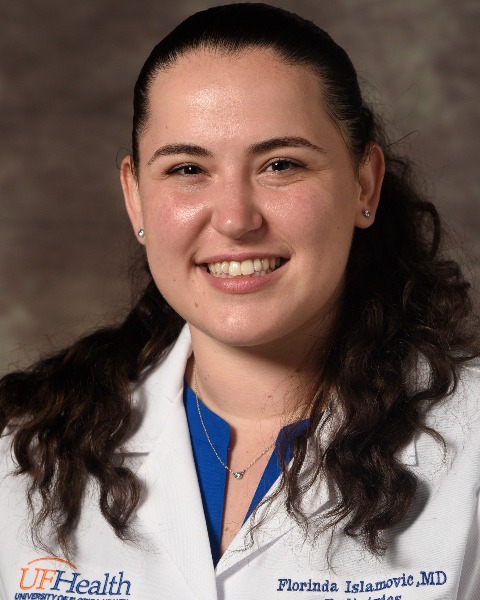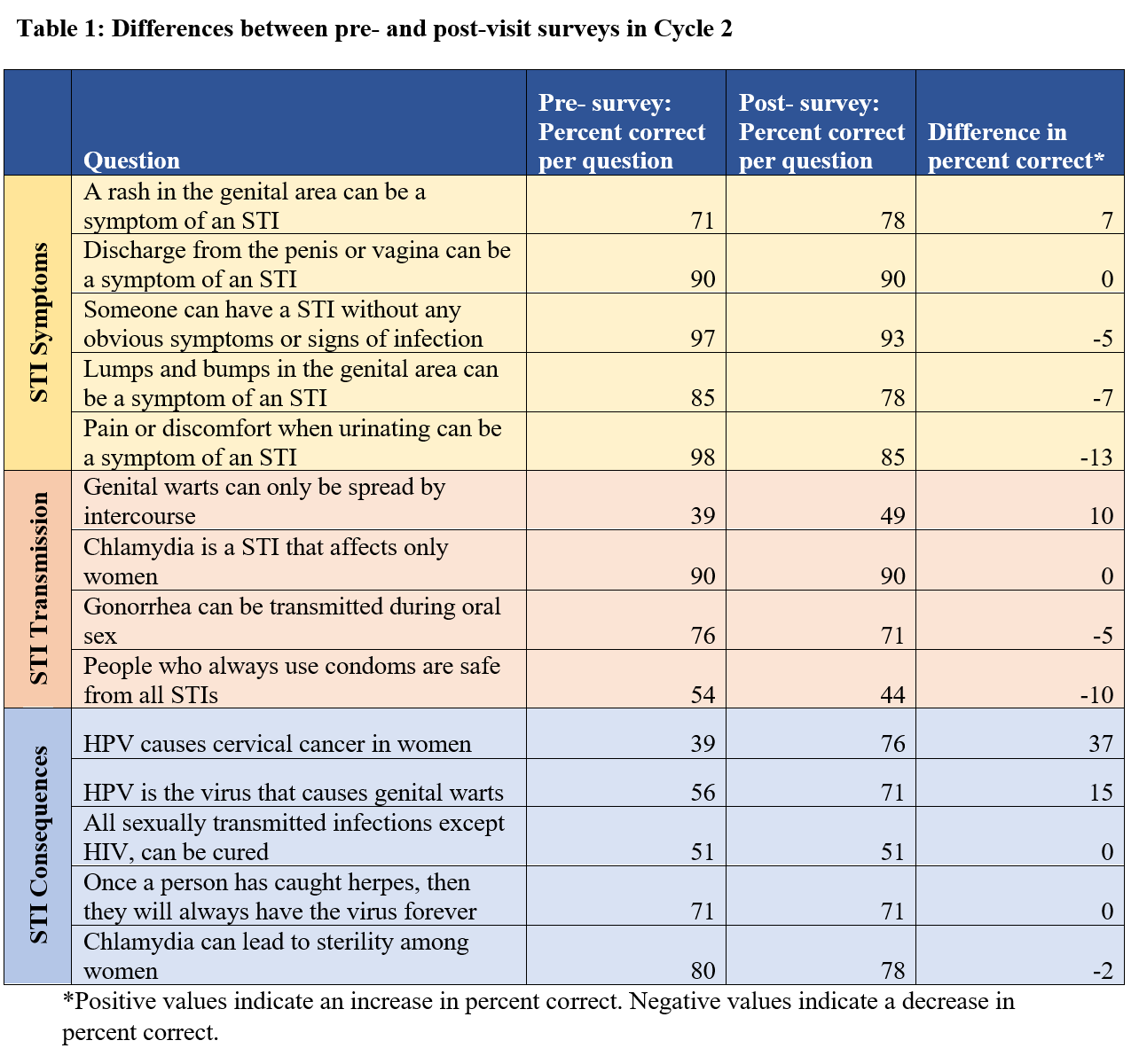Adolescent Medicine: General
Adolescent Medicine 1
446 - Improving adolescent knowledge gaps through STI education interventions in an ongoing Quality Improvement (QI) project
Publication Number: 446.1

Florinda Islamovic, MD (she/her/hers)
Resident Physician
University of Florida College of Medicine
Jacksonville, Florida, United States
Presenting Author(s)
Background: The emergency department (ED) is a significant point of care for adolescents and young adults, especially for care related to sexually transmitted infections (STI). STI education is known to reduce sexual risk in adolescents. To our knowledge, there are no studies evaluating the impact of during-visit STI educational methods.
Objective: Improve and standardize STI education provided to adolescents and young adults presenting to the ED to determine the impact on STI knowledge.
Design/Methods:
Patients 16-20 years presenting to the ED with chief complaints suggesting an STI completed pre- and post-visit surveys using questions adapted from the National Survey of Australian Secondary Students and Sexual Health 2018. Surveys were administered in 2 cycles to assess the impact of educational interventions as part of a UF Health QI Project (QIPR1688). In cycle 1, nurses and physicians provided their usual verbal STI education. In cycle 2, patients were given standard CDC STI fact sheets to review between surveys. We calculated number correct per survey and compared the median difference between pre- and post- survey for each cycle using Wilcoxon signed rank test with a p value of < 0.05 considered significant. The percent correct per question was also compared (Table 1).
Results: Paired pre- and post-visit surveys were collected in cycles 1 (n=25) and 2 (n=39). There was no statistical difference between pre- and post- surveys in cycle 1 (median difference= 0, p=0.17 95%CI [-1, 0.5]). Cycle 2 showed a significant median difference of 0.5 with a p=0.017 and 95%CI [.000, 1]. Table 1 shows the greatest positive difference in questions related to the Human Papilloma Virus and rash in genitalia (difference ranging from 9% to 36%). Negative differences were seen in questions related to symptoms and transmission of STIs, consequence of chlamydia, and limitation of condoms (difference ranging from -2% to -13%).
Conclusion(s): Our findings suggest that using standard CDC fact sheets during the visit significantly increased knowledge scores slightly, while usual verbal education did not. Outcomes per question were mixed. Some questions showed a decrease in scores. The passive nature of the CDC fact sheets, fact sheet length, language, order in packet, packet size, and patient interest may impact information transmission and explain these results. Future cycles will incorporate active education. Limitations include our small convenience sample size and only offering the surveys in English.
